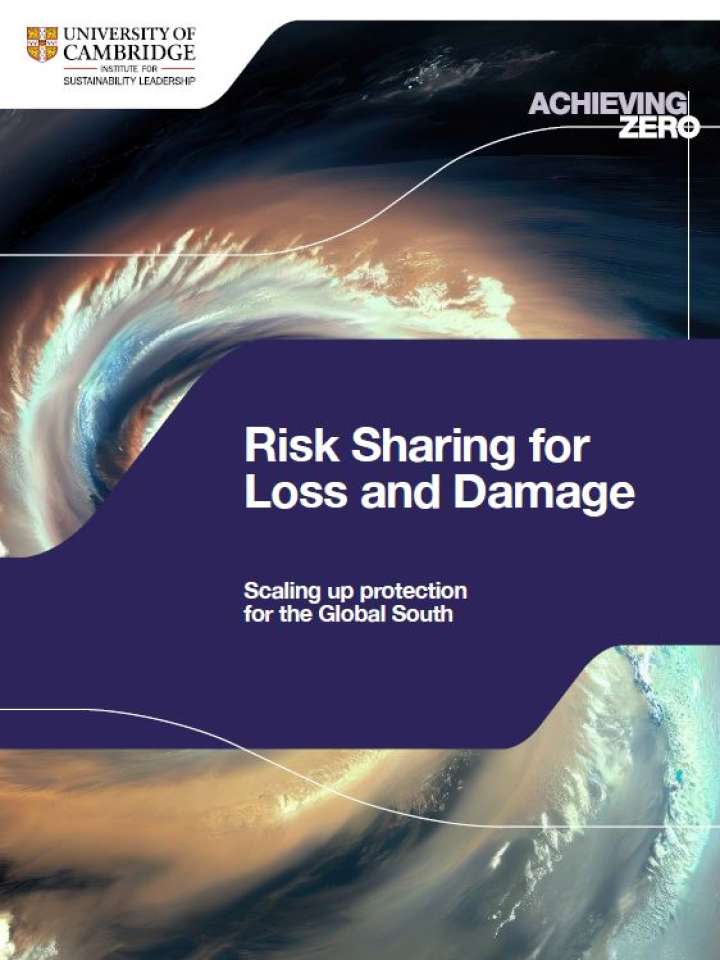Risk sharing for Loss and Damage: Scaling up protection for the Global South
The University of Cambridge Institute for Sustainability Leadership (CISL) launches a Loss and Damage action plan to scale up protection for the Global South. CISL’s new briefing offers a breakthrough in the design of the global architecture for Loss and Damage (L&D) using the economic efficiency of risk capital markets, which can convert modest annual flows from donors into major contractual entitlements for vulnerable countries when disasters strike, now and through to 2050.
The briefing is an action plan for policymakers and global institutions involved in shaping the L&D agenda as wells as for the risk capital markets and makes the following recommendations:
- For donor governments, humanitarian and development institutions and philanthropies, create L&D pre-arranged finance facilities for LDCs, SIDS and V20 as a pillar for sustainable development, humanitarian strategy and economic recovery
- As a first step, these countries should be allocated USD 10 million of pure premium each for protecting their highest priority needs.
- Create umbrella stop-loss mechanisms to protect national economies above defined levels of GDP. As an initial commitment, the smallest and most vulnerable countries should be protected from losing more than 10% of their annual GDP equivalent from climate shocks.
- For SIDS, LDCs and V20 governments, prioritise risk-sharing systems, supported by international donors, as a key pillar of Loss and Damage to generate large and predictable financial entitlements in response to climate shocks.
- For UNFCCC and climate and financial policymakers, prioritise risk-sharing systems for L&D to access the risk capital markets for scale, efficiency and predictability of funds.
- For regional risk pools and implementing institutions, scale up existing capabilities and resources for integrating pre-arranged climate and disaster risk financing into Loss and Damage implementation.
- For risk capital markets to recognise L&D as a distinctive landscape of demand for climate and disaster risk finance with specific needs.
- For international financial institutions, regulators, standard setters and credit rating agencies, take climate risks into account and price in the economic value of pre-arranged L&D finance.
Explore further
